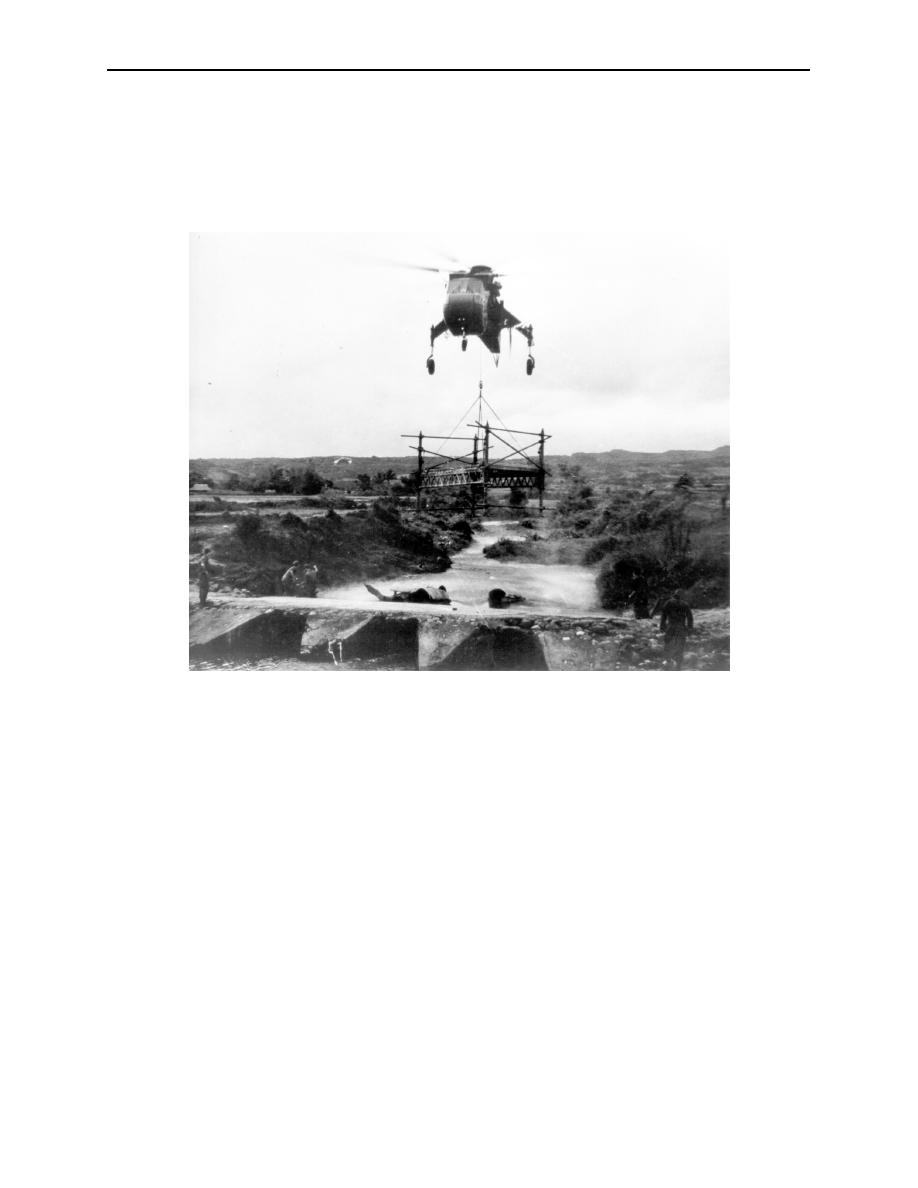
Engineer Memoirs _____________________________________________________________________
So, then, when that bridge was no longer in position to be useful for resupply, we would
bring a truck out, pull the balk off, and load the truck. We would run the truck down the road
two kilometers, bring in another Chinook, leapfrog the trestle span down and put it in place
in the new location. By keeping two of these bridges leapfrogged, we then kept ahead of our
operation for resupply. So, that was rather an original way for keeping production going.
U.S. Army helicopters leapfrogged M4T6 trestles along the route
from Tuy Hoa to Cung Son in February 1969.
Now, the hillsides were pretty steep, and so there were two ways we cleared them. First, we
used Bangalore torpedoes, remembering how they had worked in Vung Ro Bay. Well, now
we no longer had the concave problem, so we would use the tankers' armored personnel
carriers to run the Bangalores from the road up the hill. Then we would fire the Bangalores
and they would strip away the foliage--really do a great job.
The problem was that there weren't a lot of Bangalores being used in-country. So, during the
briefings down in Saigon, when they presented the rate of use of various Class V stocks and
other materials on charts, all of a sudden one week there was a spike on the use of Bangalore
torpedoes. In the second week that spike continued too.
Meanwhile, we'd exhausted all the Bangalores in Qui Nhon and Tuy Hoa depots, and we
were now flying them in from Danang. The loggers were very supportive. We put a demand
on the system, and they'd load those Bangalores up in Danang, fly them down to Tuy Hoa,
we'd offload them, and off they'd go.
114


 Previous Page
Previous Page
